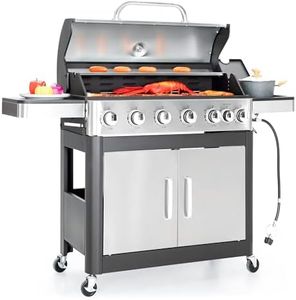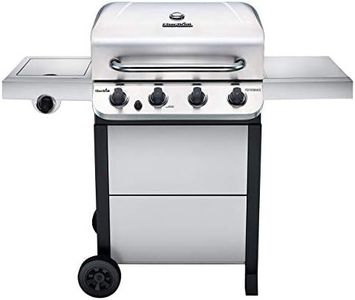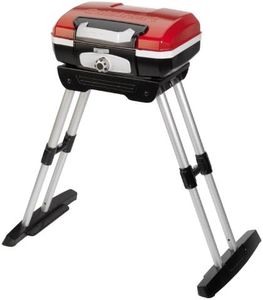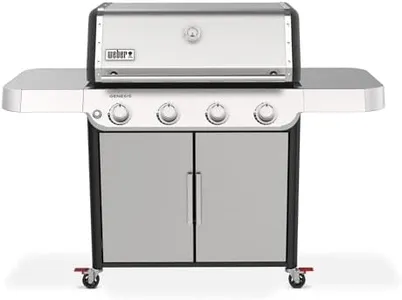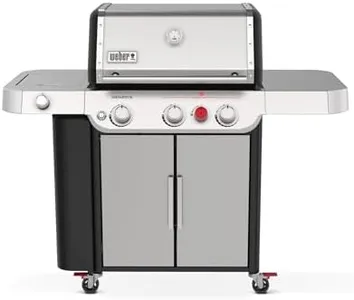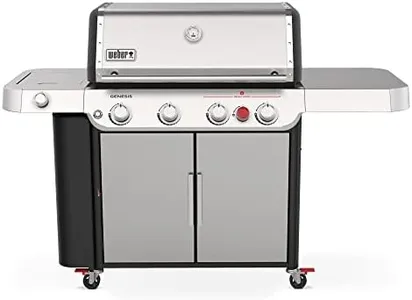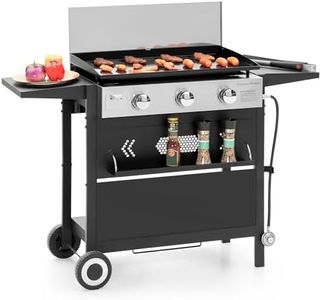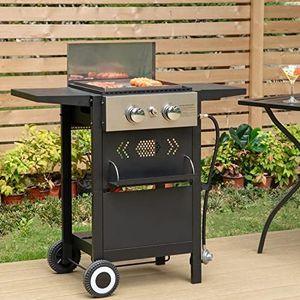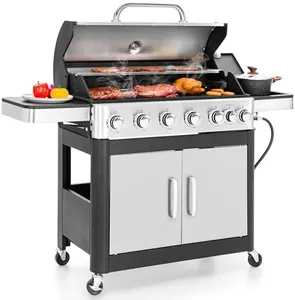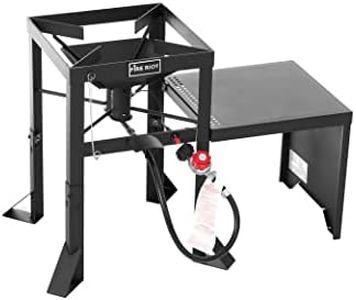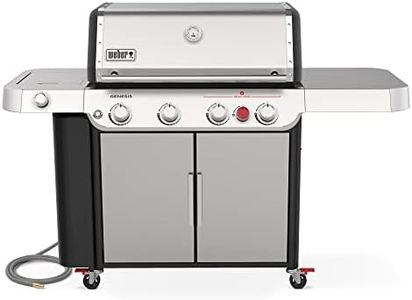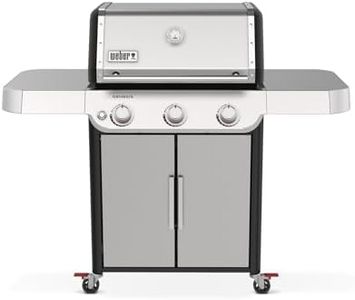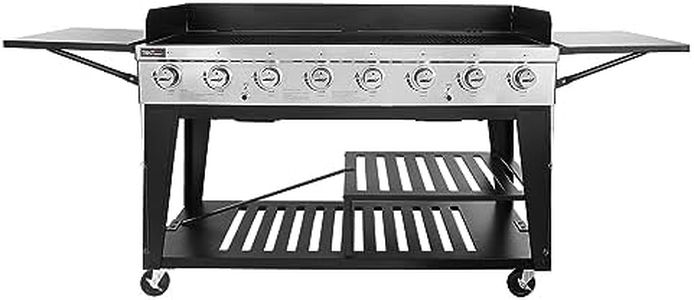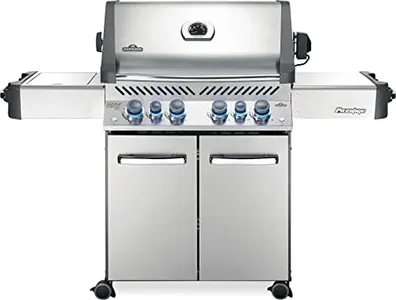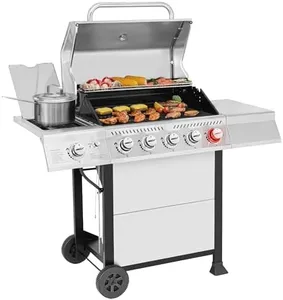10 Best Stainless Gas Grills 2025 in the United States
Our technology thoroughly searches through the online shopping world, reviewing hundreds of sites. We then process and analyze this information, updating in real-time to bring you the latest top-rated products. This way, you always get the best and most current options available.

Our Top Picks
Weber Genesis S-415 Liquid Propane Gas Grill for Outdoor Grilling, 4 Burners, Stainless Steel
Most important from
84 reviews
The Weber Genesis S-415 Liquid Propane Gas Grill is a robust and stylish option for outdoor cooking enthusiasts. Made of stainless steel, it ensures durability and superior heat retention, making it a reliable choice for frequent use. The grill features four PureBlu burners that deliver consistent flame and even heat distribution, preventing hot and cold spots across the 820 square inch cooking surface. This large cooking area is ample enough to grill an entire meal at once, providing convenience for large gatherings or family dinners.
The stainless steel cooking grates heat quickly and are built to last, enhancing the grilling experience. The FLAVORIZER Bars are designed to catch and vaporize juices, adding a savory grilled flavor to your food while also preventing flare-ups by funneling grease away from the burners. The Grease Management System is user-friendly, with a pull-out tray for easy cleanup. Additional features include a warming rack to keep food warm or toast buns, side tables for extra prep space, and compatibility with the WEBER CRAFTED Outdoor Kitchen Collection for even more versatility.
On the downside, the grill weighs 211 pounds, making it quite heavy and potentially cumbersome to move around. Assembly is required, which might be challenging for some users. Despite these minor drawbacks, the Weber Genesis S-415 is a high-quality gas grill that promises efficient and flavorful grilling, suitable for both casual users and serious grillmasters.
